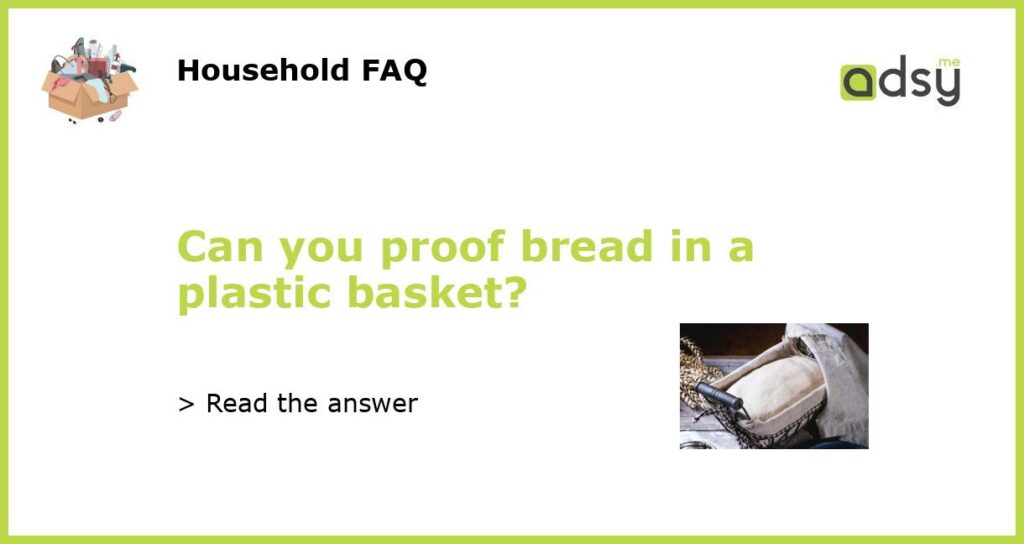Yes, You Can Proof Bread in a Plastic Basket – Here’s How
Proofing is an essential part of bread-making that determines the final shape and texture of your loaves. Traditionally, bread was proofed in baskets made of cane or wicker, but today, plastic baskets have become increasingly popular. If you are wondering whether you can proof bread in a plastic basket, the answer is yes. However, there are a few things you need to keep in mind to get the best results.
Choose the Right Size and Shape
The first thing you need to consider when using a plastic basket for proofing bread is the size and shape. Plastic baskets come in various sizes and shapes, but you want to choose one that will allow your dough to rise and hold its shape. A basket that is too small will compress the dough and prevent it from rising properly, while a basket that is too big will not provide enough support, resulting in a flat loaf. A good rule of thumb is to choose a basket that is about one and a half times the size of your dough.
Flour the Basket Properly
To prevent your dough from sticking to the plastic basket, you need to flour it properly. Use a mixture of flour and cornmeal or rice flour to dust the basket, ensuring that all the nooks and crannies are covered. This mixture not only prevents sticking but also adds a nice texture to the crust. Make sure to shake off any excess flour before placing your dough in the basket.
Use a Liner
If you are concerned about your dough sticking to the plastic basket, you can use a liner. A simple piece of parchment paper or a tea towel placed in the basket before dusting with flour can help prevent sticking. Be sure to flour the liner as well to ensure the dough doesn’t stick to it.
Pay Attention to Proofing Time
When proofing bread in a plastic basket, it is important to pay attention to the proofing time. Since plastic does not breathe like cane or wicker, the dough will not dry out as quickly, which means it will take longer to rise. However, you don’t want to overproof your dough, as it will result in a flat loaf with little or no oven spring. Keep an eye on your dough and perform a poke test to check for doneness. Once the dough has doubled in size and holds the impression of your finger, it’s ready to be baked.






